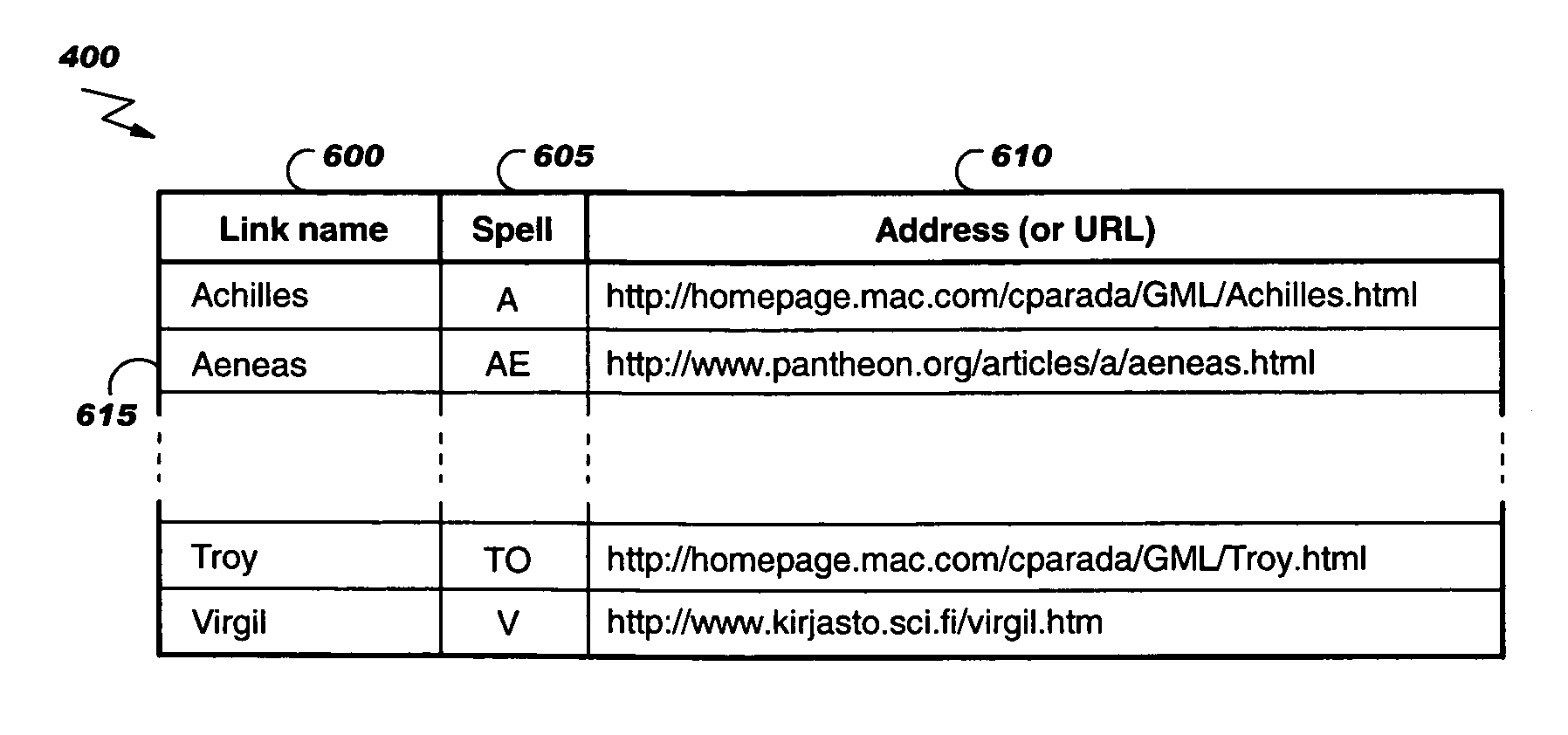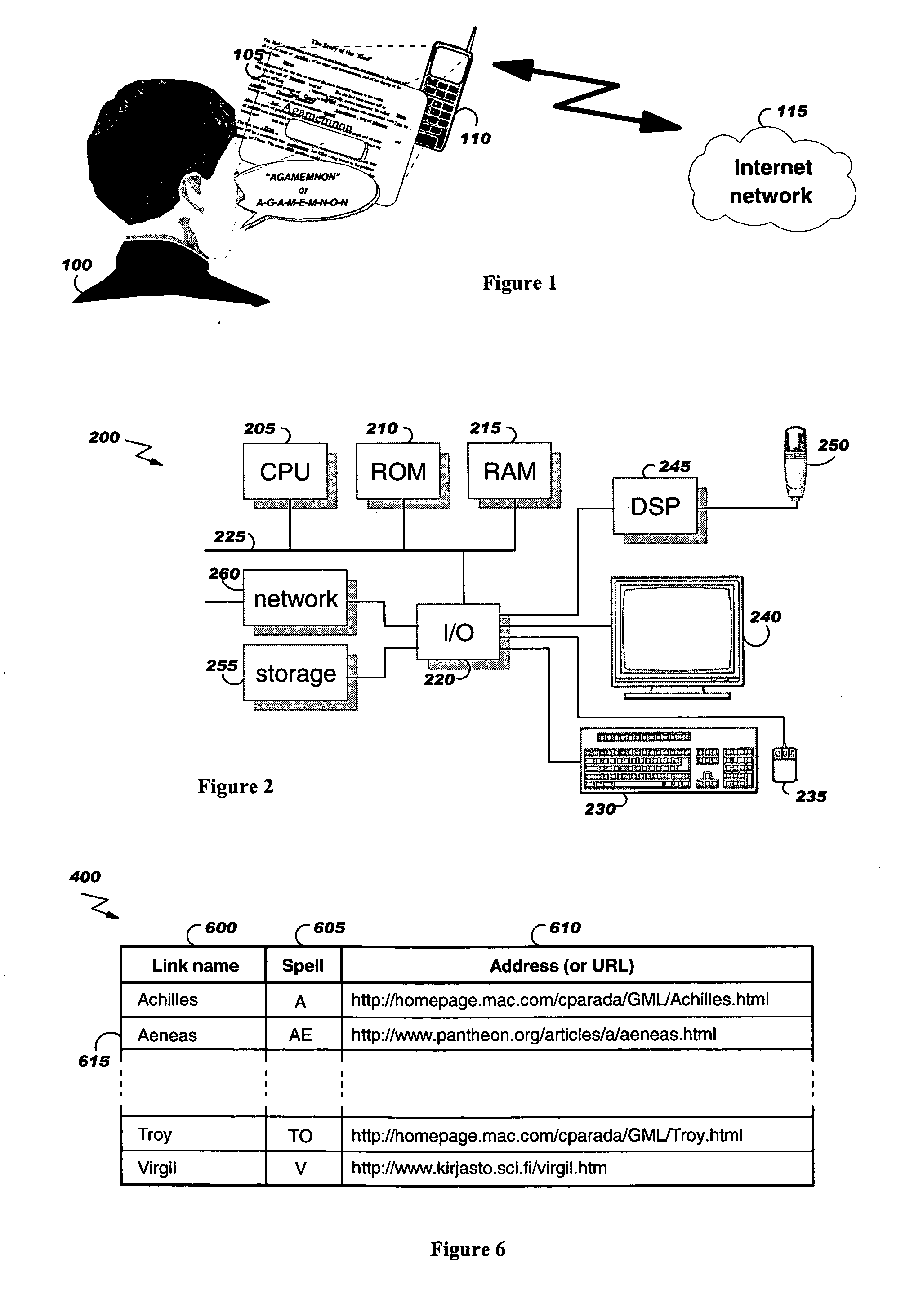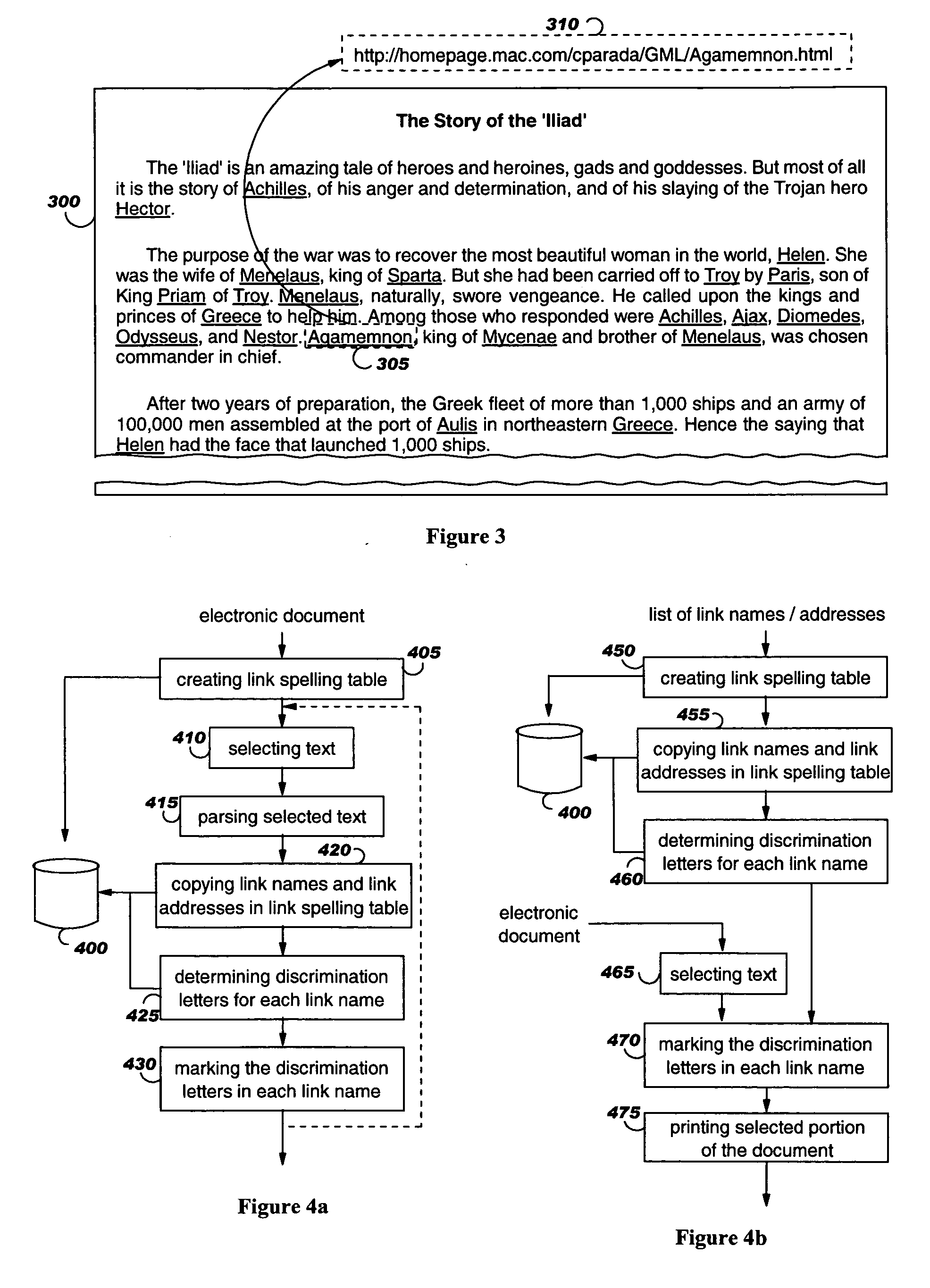Method and systems for accessing data by spelling discrimination letters of link names
a technology of link names and methods, applied in the field of data access systems and interactive hypermedia systems, can solve the problems of limiting the ability to enter information, unable to compare the reading of paper with reading electronic media, and becoming more problematic,
- Summary
- Abstract
- Description
- Claims
- Application Information
AI Technical Summary
Benefits of technology
Problems solved by technology
Method used
Image
Examples
Embodiment Construction
[0022] The invention is described with reference to the accompanying drawings; however, the invention may be embodied in many different forms and should not be construed as limited to the embodiments set forth herein. Rather the illustrated embodiments are provided so that this disclosure is thorough and complete, and fully conveys the scope of the invention to those skilled in the art. Like numbers refer to like elements throughout.
[0023] As will be appreciated by one of skill in the art, the present invention may be embodied as a method, data processing system, or computer program product. Accordingly, the present invention may take the form of an entirely hardware embodiment, an entirely software embodiment, or an embodiment combining software and hardware aspects all generally referred to herein as a “module.” Furthermore, the present invention may take the form of a computer program product on a computer-usable storage medium having computer-usable program code embodied in the...
PUM
 Login to View More
Login to View More Abstract
Description
Claims
Application Information
 Login to View More
Login to View More - R&D
- Intellectual Property
- Life Sciences
- Materials
- Tech Scout
- Unparalleled Data Quality
- Higher Quality Content
- 60% Fewer Hallucinations
Browse by: Latest US Patents, China's latest patents, Technical Efficacy Thesaurus, Application Domain, Technology Topic, Popular Technical Reports.
© 2025 PatSnap. All rights reserved.Legal|Privacy policy|Modern Slavery Act Transparency Statement|Sitemap|About US| Contact US: help@patsnap.com



